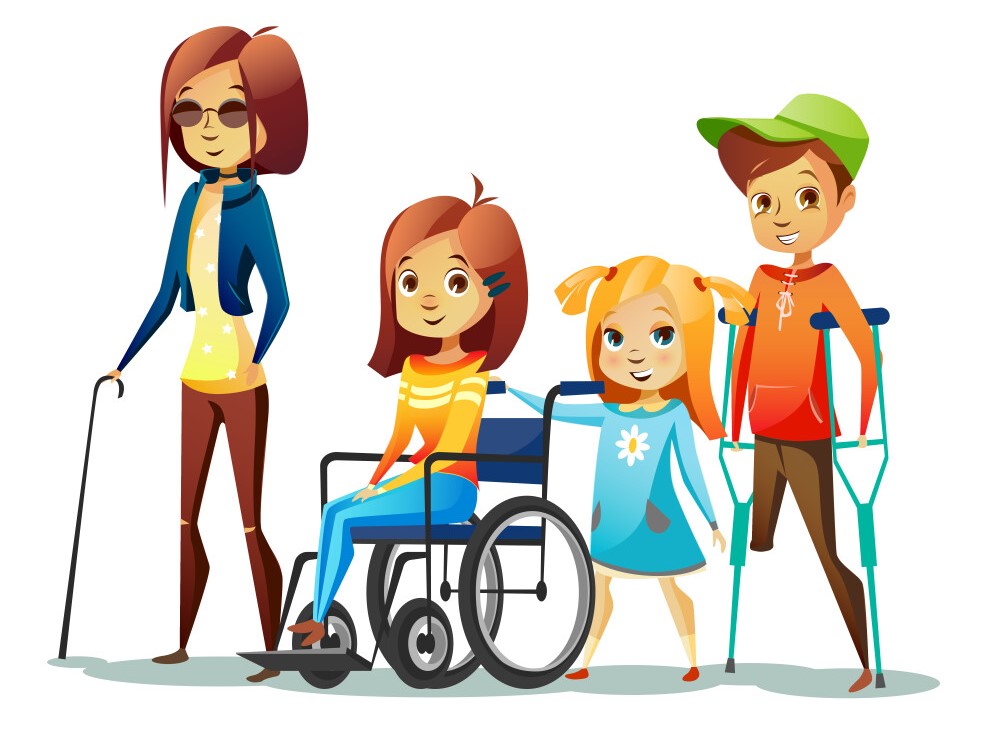Maintaining orthopedic health while managing the demands of childcare can be challenging for parents. Understanding the concept of orthopedic handicapped children and how to support them, along with basic orthopedic knowledge, is essential. This article explores ways to help students with orthopedic impairments and outlines the characteristics of these students, providing valuable insights for parents.
What is the Concept of Orthopedic Handicapped Children?
Orthopedic handicapped children are those who have physical disabilities affecting their bones, joints, or muscles. These impairments can result from congenital conditions, injuries, or diseases like cerebral palsy or muscular dystrophy. Such conditions can limit a child’s mobility and physical functioning, requiring specialized care and interventions to help them lead a fulfilling life.

How to Help Students with Orthopedic Impairments?
- Provide Accessible Learning Environments: Ensure that the physical environment, including classrooms and playgrounds, is accessible. This includes ramps, wide doorways, and adjustable desks and chairs.
- Offer Assistive Devices: Provide students with necessary assistive devices such as wheelchairs, braces, or crutches. These tools can significantly enhance their mobility and independence.
- Individualized Education Plans (IEPs): Develop and implement IEPs tailored to the child’s specific needs. These plans should outline the necessary accommodations, modifications, and goals for the student’s education.
- Promote Inclusive Activities: Encourage participation in inclusive physical activities and sports. Adaptive physical education programs can help students with orthopedic impairments stay active and engaged.
- Provide Emotional Support: Foster a supportive and understanding environment. Address any emotional or psychological challenges the child may face due to their condition.

What is the Basic Knowledge of Orthopedics?
Orthopedics is the branch of medicine that deals with the diagnosis, treatment, and prevention of disorders related to the musculoskeletal system. This includes bones, joints, muscles, ligaments, tendons, and nerves. Key areas of focus in orthopedics include:
- Bone Health: Understanding the structure and function of bones, and how to maintain their strength and integrity.
- Joint Health: Knowledge of joint anatomy and common joint disorders such as arthritis.
- Muscle Function: Understanding muscle mechanics and how to prevent and treat muscle injuries.
- Rehabilitation: Techniques and exercises to help recover from orthopedic injuries or surgeries.
What are the Characteristics of Students with Orthopedic Impairment?
Students with orthopedic impairments may exhibit a range of characteristics depending on the severity and nature of their condition. Common characteristics include:
- Limited Mobility: Students may have difficulty walking, running, or performing tasks that require physical movement. They might use wheelchairs, walkers, or other mobility aids.
- Physical Deformities: Some students may have visible physical deformities or asymmetries, which can affect their posture and movement.
- Chronic Pain: Many students with orthopedic impairments experience chronic pain, which can impact their ability to participate in activities and concentrate in class.
- Fatigue: Due to the extra effort required to perform physical tasks, these students might tire more quickly than their peers.
- Coordination Issues: Orthopedic impairments can affect motor skills, leading to difficulties with coordination and balance.

Balancing Childcare and Joint Wellness
Parents need to balance their own joint health while caring for children, especially those with orthopedic impairments. Here are some tips:
- Practice Proper Lifting Techniques: Use your legs to lift instead of your back to avoid strain. Hold your child close to your body when lifting.
- Stay Active: Engage in regular physical activity to keep your joints healthy. Low-impact exercises like swimming, walking, or yoga can be beneficial.
- Use Ergonomic Tools: Utilize ergonomic tools and furniture to reduce strain on your joints. This includes adjustable chairs, supportive mattresses, and proper footwear.
- Take Breaks: Take regular breaks to rest and stretch, especially during prolonged periods of childcare activities.
- Seek Professional Help: If you experience joint pain or discomfort, consult with an orthopedic specialist. Early intervention can prevent further damage and promote recovery.
In conclusion, understanding orthopedic health and how to support children with orthopedic impairments is crucial for parents. By promoting accessible learning environments, providing necessary support, and maintaining their own joint health, parents can create a balanced and fulfilling life for themselves and their children.
Know More About ORTHOPEDIC HEALTH AND WELLNESS: NUTRITION, EXERCISE, AND LIFESTYLE CHOICES FOR STRONG BONES
Orthopedic Health for Expectant Mothers: Joint Health Tips During Pregnancy
